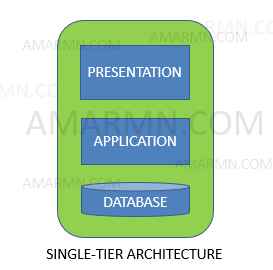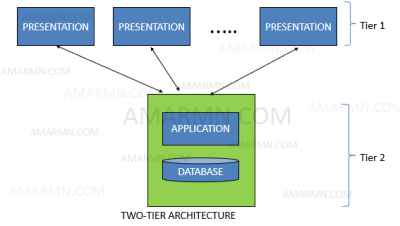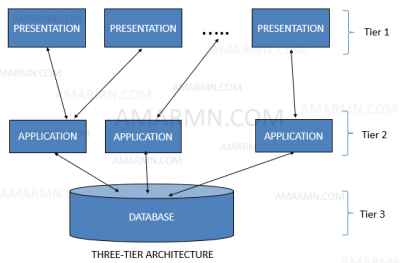Single-Tier Architecture

In a single-tier system configuration, all the processing tasks ( presentation, application, and database ) is performed by a single machine. SAP’s R/1 system followed single-tier architecture. Mainframe systems also follows single-tier architecture. We can use this model for SAP IDES system installation, for training and demonstration purpose.
Two-Tier Architecture

A two-tier architecture model has a separate presentation layer and a separate application and database layer. This system model is good at performance as well as supports multiple users. SAP R/2 system released in early 1980’s followed two-tier architecture.
Three-Tier Architecture

In a three-tier architecture, the Presentation, Application and Database layer are decoupled to execute separate systems. Three-tier architecture configuration is highly scalable with the provision to install multiple servers for the application layer. Theoretically, three-tier architecture model can support any number of end users.
